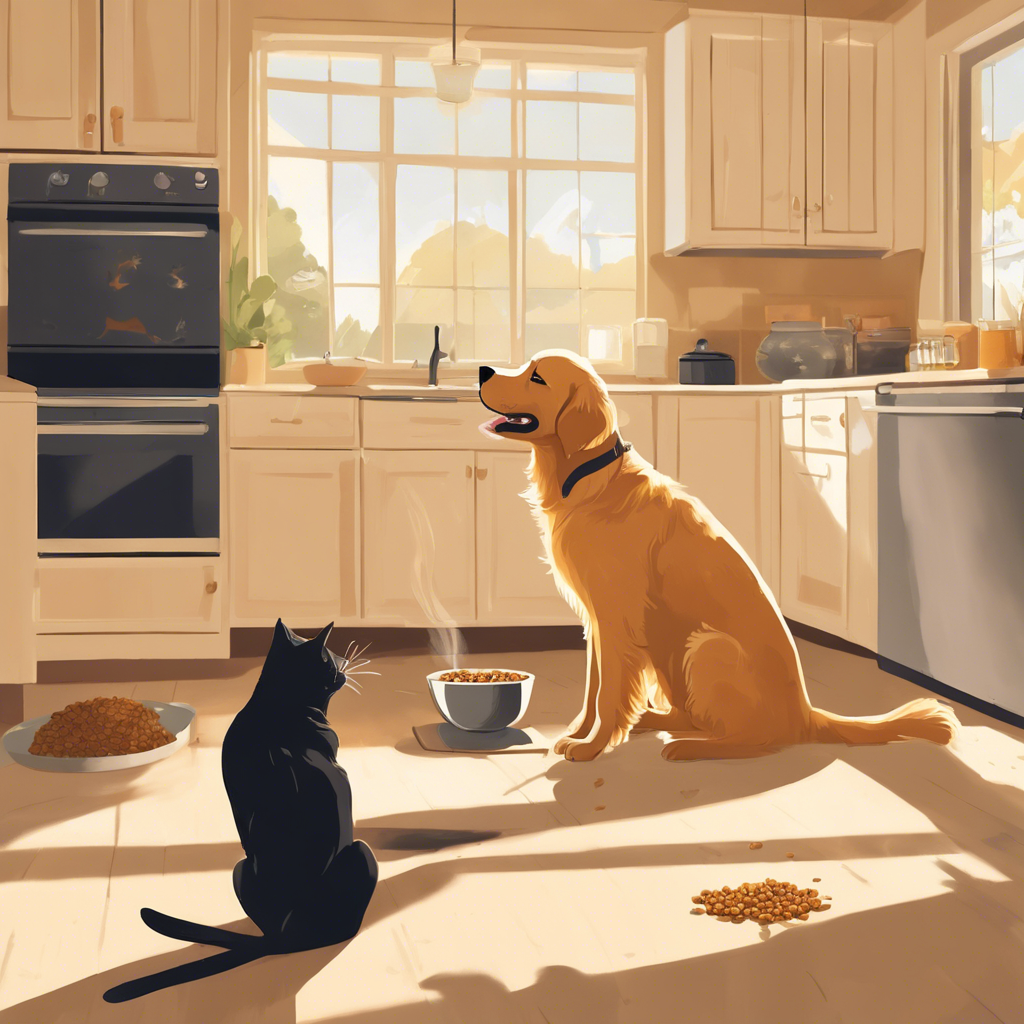As pet owners, we often face unique challenges in ensuring our beloved animals maintain a balanced and appropriate diet. One common issue that arises in multi-pet households is the curious phenomenon of dogs eating cat food. While this behavior may seem harmless or amusing at first glance, it raises important questions regarding nutrition, health, and behavior that every pet owner should consider. In this blog post, we will delve into the reasons why dogs are attracted to cat food, the nutritional implications of such behavior, and what pet owners can do to manage or prevent their dogs from indulging in their feline counterparts’ meals.

Why Dogs Eat Cat Food
1. Smell and Taste Appeal
One of the primary reasons dogs are drawn to cat food is its distinctive smell and taste. Cat food is formulated to meet the dietary needs of cats, which often includes higher protein and fat content compared to dog food. This rich formulation tends to have an appealing aroma that can be irresistibly enticing for dogs. While dogs are omnivores and can thrive on a variety of food sources, they are also instinctively drawn to high-protein foods, making cat food particularly enticing.
2. Curiosity and Competition
Dogs are inherently curious creatures. They are often motivated by the desire to explore their environment, taste new foods, and mimic the behaviors of other animals. If a dog observes a cat enjoying its food, they may be drawn to investigate the source of such enjoyment. Additionally, dogs are pack animals, and competition can play a significant role in their behavior. If they perceive a cat’s food as a resource, they might feel compelled to assert themselves by eating it.
3. Nutritional Gaps in Dog Food
Some dogs may turn to cat food due to deficiencies in their regular diet. Dogs require a well-balanced diet tailored to their specific needs based on their size, breed, age, and activity level. If a dog’s food is lacking certain nutrients—such as protein or fat—he or she may seek out alternative sources. Cat food, being higher in protein and fat, can appear as an appealing option to fill these gaps.
The Nutritional Implications
While it may seem benign for dogs to snack on cat food, there are significant nutritional considerations to keep in mind. Understanding these implications can help dog owners make informed decisions regarding their pets’ diets.
1. Dissimilar Nutritional Profiles
Cat food typically contains higher levels of protein and fat than dog food. While dogs do require protein in their diet, excessive protein intake can lead to health issues such as obesity and pancreatitis, especially in less active dogs. Moreover, cat food often contains ingredients that may not be suitable for dogs, including certain preservatives, vitamins, and amino acids in proportions not aligned with canine nutrition.
2. Potential Health Risks
Regular consumption of cat food can pose various health risks to dogs. Pancreatitis, a painful inflammation of the pancreas, can occur due to the high fat content in cat food. Gastrointestinal upset, including diarrhea or vomiting, can also result from digestive issues stemming from a sudden change in diet. Additionally, if a dog consumes large quantities of cat food over time, they may experience obesity and its related health complications, including diabetes, joint issues, and heart disease.
3. Allergic Reactions
Dogs can also have allergic reactions to certain ingredients found in cat food that differ from their regular food. Common allergens include beef, dairy, and certain grains. Repeated exposure to these potential allergens via cat food can lead to skin irritations, gastrointestinal distress, and other health concerns.
What Can Pet Owners Do?
For pet owners, the goal is to ensure that all pets within the household receive appropriate nutrition while minimizing unwanted, potentially harmful behaviors. Here are some strategies to manage the situation:
1. Separate Feeding Areas
Creating designated feeding areas can be an effective way to prevent dogs from eating cat food. Feed cats in an area that is inaccessible to dogs, such as high counters or enclosed spaces. Providing elevated feeding stations for cats can also help, as most dogs cannot reach such heights.
2. Supervision and Training
Having an eye on both pets during mealtime can discourage sneaking behaviors. Positive reinforcement training can be employed to teach dogs to respect the cats’ food and their designated eating spaces. Commands such as “leave it” or “no” can be particularly effective when consistently applied.
3. Balanced Diet for Dogs
Consult with a veterinarian about the nutritional needs of your dog. It can be beneficial to review their diet and make necessary adjustments if deficiencies are noted. Ensure that the chosen dog food is high-quality and meets their specific health needs, minimizing the temptation to seek alternative food sources.
4. Healthy Alternatives
If dogs persist in their interest in cat food, consider offering dog-friendly treats that are high in protein to satisfy their cravings. There are various specially formulated dog treats available that can provide similar tastes and benefits without compromising their health.
Conclusion
While the behavior of dogs eating cat food may seem amusing or harmless, it is essential for pet owners to recognize the potential health implications and nutritional disparities associated with this practice. Understanding the motivations behind this behavior will aid in devising strategies to discourage it while ensuring all pets receive proper nutrition. By implementing proactive measures, such as creating separate feeding areas, monitoring mealtimes, and seeking advice from veterinary professionals, pet owners can help cultivate a healthier and more harmonious environment for both dogs and cats alike. As always, the well-being of our pets should remain our top priority, guiding us in our efforts to provide them with the best care possible.